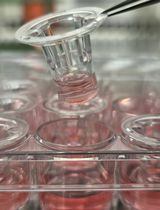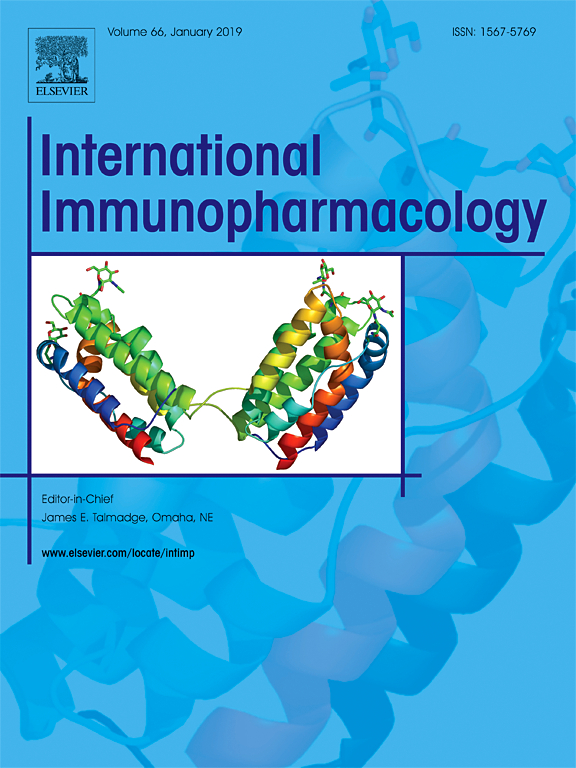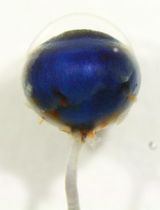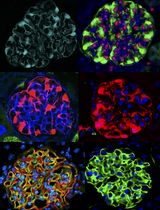- EN - English
- CN - 中文
Assessment of Humoral Alloimmunity in Mixed Lymphocyte Reaction
混合淋巴细胞反应中体液同种异体免疫的评估
发布: 2019年01月20日第9卷第2期 DOI: 10.21769/BioProtoc.3139 浏览次数: 10856
评审: Vemika ChandraEmilie BattivelliAnonymous reviewer(s)

相关实验方案

研究免疫调控血管功能的新实验方法:小鼠主动脉与T淋巴细胞或巨噬细胞的共培养
Taylor C. Kress [...] Eric J. Belin de Chantemèle
2025年09月05日 2361 阅读
Abstract
Humoral alloimmunity remains a significant and unresolved problem that constrains allograft survival. Thus, there is a need for the development of an easy, preferably non-radioactive, and inexpensive protocol for assessing the effect of various drug treatments on humoral alloimmunity. In order to satisfy this demand, we developed such a protocol in which de novo alloantibodies production is induced in one-way mixed lymphocyte reaction (MLR). The amount and capacity of the generated alloantibodies in the supernatant of each one-way MLR is assessed using an antibody-mediated cell dependent cytotoxicity (CDC) assay. The principle of the assay relies on the assessment of cellular survival of resting PBMCs isolated from the same donors, supplemented with the alloantibodies from the one-way MLR supernatant. The lesser is the cellular survival, the higher the production of alloantibodies in one-way MLR and consequently the more potent the humoral alloimmunity.
Keywords: Humoral alloimmunity (体液同种异体免疫)Background
Kidney transplantation is the treatment of choice for patients with end-stage kidney disease. Modern immunosuppression strategies considerably increased the one-year graft survival by decreasing the frequency and the potency of acute cellular-mediated rejection episodes, though long-term graft survival remains problematic mainly due to chronic antibody-mediated rejection, a case without effective treatment (Abramowicz et al., 2018). Thus, there is a need for the development of an easy, preferably non-radioactive, and inexpensive protocol for assessing humoral alloimmunity during various drug interventions, as well as for preclinical evaluation of new medications.
We developed such a protocol in order to test the effect of certain compounds on humoral alloimmunity (Eleftheriadis et al., 2017a, 2017b and 2017c). Although this protocol has been applied in human peripheral blood mononuclear cells (PMBCs), it could also be easily modified for using cells from other species, for instance from different mouse strains.
Our protocol was based on previous studies, supporting that one week is enough for the development of IgM and IgG alloantibodies in one-way mixed lymphocyte reaction (MLR) with a stimulator to responder cell ratio equal to 1:1 (Rumke et al., 1982), along with the well-established antibody-mediated complement-dependent cytotoxicity (CDC) assay (Konishi et al., 2008). Mitomycin C was used to treat the stimulator cell population. Mitomycin C is an anti-tumor antibiotic agent, which acts via the inhibition of DNA and RNA synthesis, rendering the lymphocytes unable to proliferate or differentiate in effector cells. Prolonged treatment with mitomycin-C may also induce apoptosis. The responder PBMCs produced alloantibodies against the mitomycin-C treated stimulator cells.
To determine humoral alloimmunity, de novo alloantibodies production is induced in one-way MLR. Amount and capacity of generated alloantibodies in the supernatant of each one-way MLR are assessed using an antibody-mediated cell dependent cytotoxicity (CDC) assay. The principle of the assay relies on the assessment of cellular survival of resting PBMCs isolated from the same donors, supplemented with the alloantibodies from the one-way MLR supernatant (Figure 1). Cell survival was measured by performing a well-known cell proliferation assay [Tetrazolium salt 2,3-bis-(2-methoxy-4-nitro-5-sulfophenyl)-2H-tetrazolium-5-carboxanilide, XTT cell proliferation assay kit].
We avoided direct cytotoxicity assessment through the non-radioactive lactate dehydrogenase release assay (LDH) mainly because cellular cytotoxicity inevitably occurs in the context of MLRs (Sato et al., 1999) and lactate dehydrogenase is released in the supernatant by dead cells only. Thus, different drug treatments may exert different effects on the MLR mixed cell populations resulting in different amounts of LDH released in the supernatant, a fact that would provide erroneous data in the subsequent antibody-mediated CDC assay. 
Figure 1. Assessment of humoral alloimmunity in mixed-lymphocyte reaction. The flow-chart depicts the protocol to assess humoral alloimmunity using MLR. In one-way MLR, responder PBMCs produce alloantibodies against the mitomycin-C treated stimulator cells. Blood A and B correspond to blood donors A and B, respectively. Blood B sample will be used to generate the resting cells of that donor that will constitute the responder cells against the mitomycin-C treated stimulator cells of Blood A. Resting cells, or responder cells of Blood A will be used against the mitomycin-C treated stimulator cells of another blood donor’s sample (e.g., Blood B). Quantitative measurement of alloantibodies in the supernatant of the MLR is assessed by adding this supernatant to resting PBMCs (from the same individual who provided the stimulator PMBCs used for the MLR) using an antibody-mediated CDC assay and measuring cell viability with XTT assay.
Materials and Reagents
- Filtered P1000 tips DF1000ST (Gilson, catalog number: F171705)
- Filtered P200 tips DF200ST (Gilson, catalog number: F171503)
- Filtered P20 tips DF30ST (Gilson, catalog number: F171303)
- Cover glasses 22 x 22 mm (VWR, catalog number: 631-0125)
- Serological pipette 10 ml sterile (Greiner Bio-One, catalog number: 607180/10ml)
- Cell culture 6-well plate, flat bottom, tissue culture treated (Eppendorf, catalog number: 0030720113)
- Cell culture 24-well plate, flat bottom, tissue culture treated (Eppendorf, catalog number: 0030722116)
- Cell culture 96-well plate, flat bottom, tissue culture treated (Eppendorf, catalog number: 0030730119)
- K3-EDTA vacuum blood collection tube (C.D.RICH, catalog number: CDRP007)
- Conical tubes 15 ml (Corning, catalog number: CLS430790)
- Conical tubes 50 ml (Corning, catalog number: CLS430828)
- Pasteur Plastic Pipettes, 3 ml, sterile (Fisher Scientific GmbH, catalog number: 3124975)
- Microcentrifuge Tube, 1.7 ml, Snap Cap, Clear, sterile (Corning B.V., catalog number: 3621)
- Sterile blood syringes, 20 ml (Nipro, catalog number: 200812)
- Low-Tox-H rabbit complement (Cedarlane, catalog number: CL3331)
- Ficoll Histopaque-1077 (Sigma-Aldrich, Merck Millipore, catalog number: 10771-100ML)
- Trypan blue solution (Sigma-Aldrich, Merck Millipore, catalog number: T8154-100ML)
- RPMI 1640 cell culture medium (Sigma-Aldrich, Merck Millipore, catalog number: R7388-100ML)
- RPMI 1640 cell culture medium without phenol red (Gibco, catalog number: 11835-063 500ML)
- Fetal bovine serum (Sigma-Aldrich, Merck Millipore, catalog number: F2442-500ML)
Note: The fetal bovine serum has to be heat inactivated at 55 °C for 1 h. - Antibiotic-antimycotic solution 100x (Sigma-Aldrich, Merck Millipore, catalog number: A5955)
- Dulbecco’s phosphate buffer saline (Sigma-Aldrich, Merck Millipore, catalog number: D8537-500ML)
- XTT cell proliferation assay kit (Trevigen, catalog number: 4891-025-K)
- Mitomycin C (Sigma-Aldrich, Merck Millipore, catalog number: M0503)
Equipment
- Pipetman Starter kit (Gilson, catalog number: F167300)
- CappTempo motorized pipette controller (Capp, catalog number: T100-B)
- Cell Counting Chamber Neubauer (Marienfeld, catalog number: 0640010)
- Safety Cabinet Safeflow 1.2 (BioAir, catalog number: LD60000)
- CO2 Incubator (Heraeus, model: BB6220)
- Inverted Microscope (Zeiss, model: Axiovert 40C)
- Varispeed Refrigerated Centrifuge (Centurion Scientific, model: K280R)
- Heated Bath Circulator (Lauda, model: M20)
- Refrigerator Cell Plate Centrifuge (Eppendorf, model: 5810R)
- Multimode Plate Reader (Perkin Elmer, model: Enspire)
- Microcentrifuge (Eppendorf, model: 5415 R)
- Any Styrofoam box that will serve as an ice bucket
Software
- The SPSS software (version 13; SPSS Inc, Chicago, IL, USA) (for statistical analysis of the data)
Procedure
文章信息
版权信息
© 2019 The Authors; exclusive licensee Bio-protocol LLC.
如何引用
Pissas, G. and Eleftheriadis, T. (2019). Assessment of Humoral Alloimmunity in Mixed Lymphocyte Reaction. Bio-protocol 9(2): e3139. DOI: 10.21769/BioProtoc.3139.
分类
免疫学 > 免疫细胞功能 > 淋巴细胞
细胞生物学 > 细胞分离和培养 > 细胞分离
您对这篇实验方法有问题吗?
在此处发布您的问题,我们将邀请本文作者来回答。同时,我们会将您的问题发布到Bio-protocol Exchange,以便寻求社区成员的帮助。
提问指南
+ 问题描述
写下详细的问题描述,包括所有有助于他人回答您问题的信息(例如实验过程、条件和相关图像等)。
Share
Bluesky
X
Copy link











